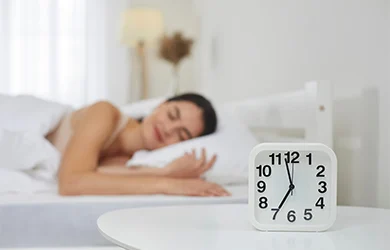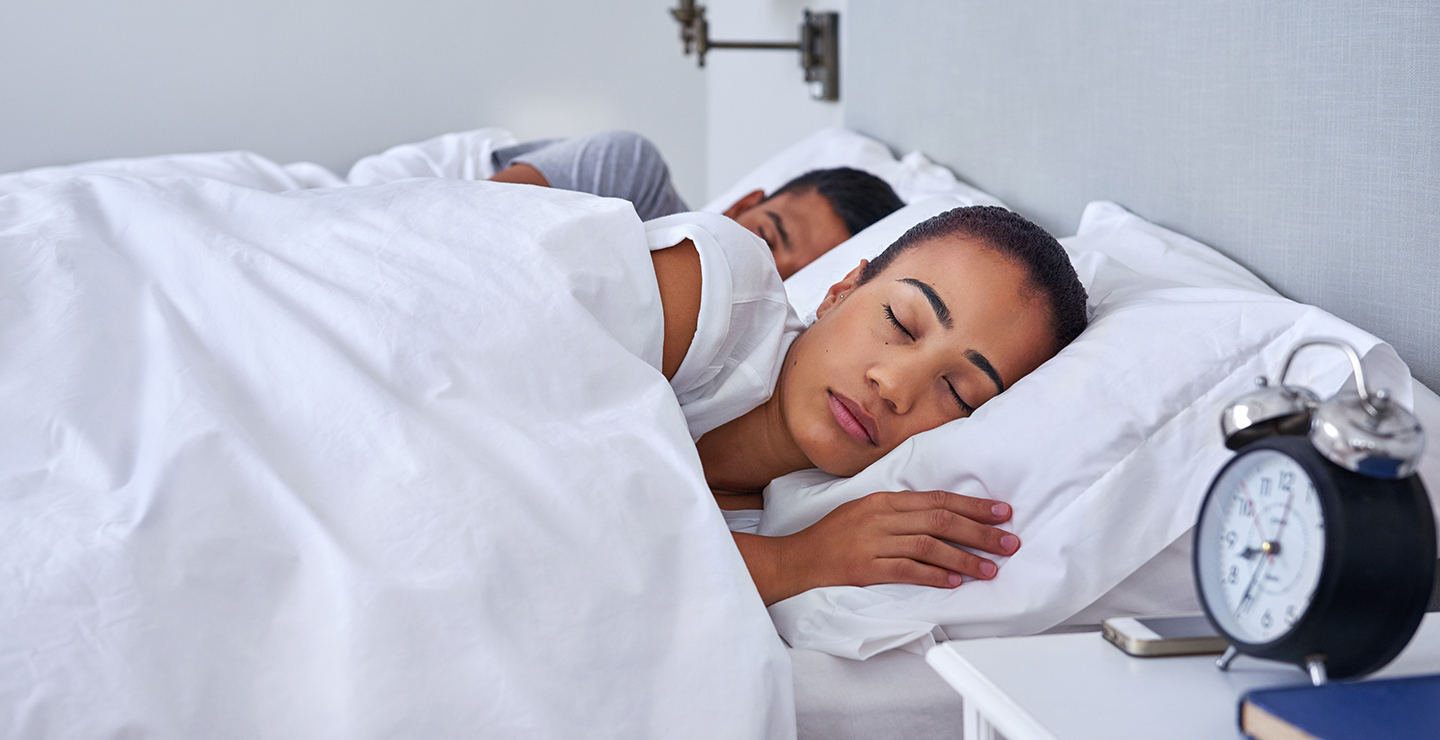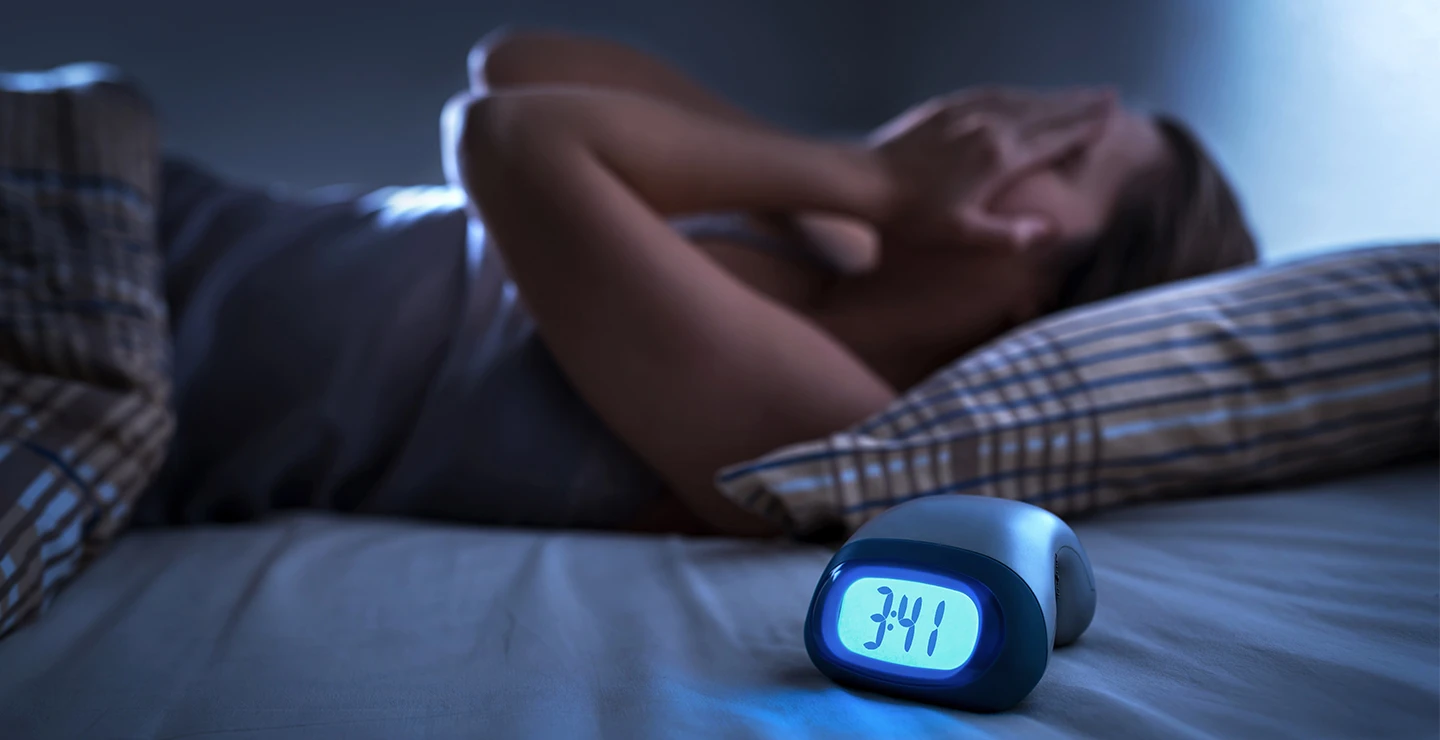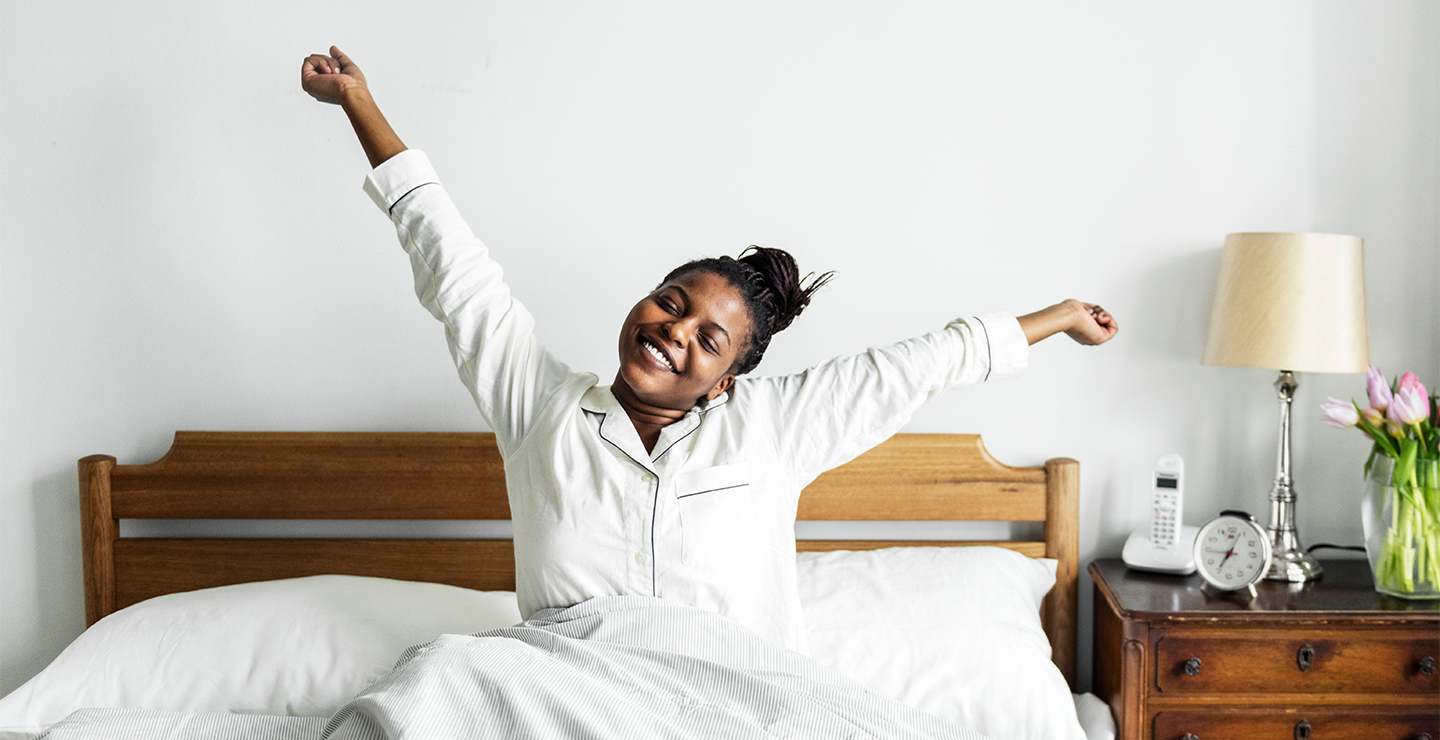3 Tips for Better Sleep During Daylight Savings
It’s almost Daylight Saving Time, when we move clocks up one hour and look ahead to long, bright summer days
Struggles & Remedies


It’s almost Daylight Saving Time, when we move clocks up one hour and look ahead to long, bright summer days. The not-so-fun fact: Daylight Saving Time can affect your sleep hygiene, which can in turn affect your health. Keep reading to find out why Daylight Saving Time affects your sleep, and 3 tips for better sleep to keep you on track even when the clocks spring forward.
What is Daylight Savings?
Daylight Saving Time (DST) is between the second Sunday of March and the first Sunday in November. During this time, we move clocks forward one hour, so we can experience more natural daylight during the summer months. The time between fall and spring is simply called standard time.1
That means on the second Sunday of March at 2:00 AM, we move clocks forward to 3:00 AM. On the first Sunday of November at 2:00 AM, we move clocks back to 1:00 AM. That’s probably why you’ve also heard these days called ‘Spring Forward’ and ‘Fall Back,’ respectively—unless you’re in Arizona or Hawaii, where Daylight Saving Time is not observed.1
DST was introduced back when candles and gas lamps made it extra expensive to run businesses in the nighttime. The extra sunlight equaled cost savings for business owners. Today, we enjoy the extra long summer days that come with Daylight Saving Time. But that doesn’t mean Daylight Saving Time doesn’t have its drawbacks, too.
That means on the second Sunday of March at 2:00 AM, we move clocks forward to 3:00 AM. On the first Sunday of November at 2:00 AM, we move clocks back to 1:00 AM. That’s probably why you’ve also heard these days called ‘Spring Forward’ and ‘Fall Back,’ respectively—unless you’re in Arizona or Hawaii, where Daylight Saving Time is not observed.1
DST was introduced back when candles and gas lamps made it extra expensive to run businesses in the nighttime. The extra sunlight equaled cost savings for business owners. Today, we enjoy the extra long summer days that come with Daylight Saving Time. But that doesn’t mean Daylight Saving Time doesn’t have its drawbacks, too.
Why Daylight Savings May Give You Trouble Falling Asleep
Moving clocks forward adjusts when and how long we experience natural daylight throughout the day. Here’s the catch: The day the clock springs forward your body will likely naturally wake up an hour later, and that evening, your bedtime will come an hour earlier. The days following, your body will need to adjust to the “loss” of an hour, without adjustments to your daily schedule. A German study published by Anne-Marie Schneider noted, “Class and performance tests should not take place in the first week after the transition into DST.”4
Beyond that first week, our bodies also must adjust to waking up in the darkness, and spending part of the evening in the daylight. This might adjust circadian clock rhythms, or the sleep-wake cycle.2 According to American Academy of Sleep Medicine, “Daylight saving time is less aligned with human circadian biology.”5 The sleep-wake cycle responds to light predictably. DST increases morning darkness and evening light, but our work and school schedules don’t adjust to the light exposure. In short, you may feel more tired or groggy in the mornings during DST, and more alert in the evenings.6
Think about kids’ bedtimes and sleep routines, for example. Let’s say bedtime is 7:30 PM. During Standard Time, it’s likely already dark by that time, and the darkness will send the cue to your little one that it’s time for bed. During Daylight Saving Time, the sun might just be setting at 7:30 PM. With light still out, the sleep-wake cycle may throw off a kid’s sleep routine. And what kid doesn’t want to go to bed later on a school night?
Stay on track with your sleep routine as best you can when the time changes. Whether it’s Daylight Saving or Standard Time, the same best practices help you get a good night’s sleep still apply. That includes setting and sticking to a bedtime and wake schedule, putting away phones and bright screens 30 minutes before bed, avoiding caffeine in the evenings, and more .
Want to spring forward without missing on too many Zzzs? There are some tips that can help you get a full night’s sleep when the clocks move forward for Daylight Savings. Keep reading for tips for better sleep during daylight savings.
Beyond that first week, our bodies also must adjust to waking up in the darkness, and spending part of the evening in the daylight. This might adjust circadian clock rhythms, or the sleep-wake cycle.2 According to American Academy of Sleep Medicine, “Daylight saving time is less aligned with human circadian biology.”5 The sleep-wake cycle responds to light predictably. DST increases morning darkness and evening light, but our work and school schedules don’t adjust to the light exposure. In short, you may feel more tired or groggy in the mornings during DST, and more alert in the evenings.6
Think about kids’ bedtimes and sleep routines, for example. Let’s say bedtime is 7:30 PM. During Standard Time, it’s likely already dark by that time, and the darkness will send the cue to your little one that it’s time for bed. During Daylight Saving Time, the sun might just be setting at 7:30 PM. With light still out, the sleep-wake cycle may throw off a kid’s sleep routine. And what kid doesn’t want to go to bed later on a school night?
Stay on track with your sleep routine as best you can when the time changes. Whether it’s Daylight Saving or Standard Time, the same best practices help you get a good night’s sleep still apply. That includes setting and sticking to a bedtime and wake schedule, putting away phones and bright screens 30 minutes before bed, avoiding caffeine in the evenings, and more .
Want to spring forward without missing on too many Zzzs? There are some tips that can help you get a full night’s sleep when the clocks move forward for Daylight Savings. Keep reading for tips for better sleep during daylight savings.
3 Tips for Better Sleep During Daylight Savings
1. Gradually change your sleep schedule
The Sunday that time springs forward, you find yourself wide awake at the time that you would normally be sound asleep. You can avoid this altogether if you purposefully shift your sleep in the few days leading up to the time change. Starting Thursday or Friday before the second Sunday in March, adjust your bedtime and alarm clock 15 to 20 minutes each night.4 That way, by the time the clock springs forward on Sunday, your body is already adjusted to the time change.
2. Consider a melatonin supplement
More time in the daylight feels great—until you’re tossing and turning in the middle of the night. ZzzQuil PURE Zzzs melatonin gummies work naturally with your body to support sleep, containing an optimal level of Melatonin, shown to help regulate your sleep cycle without next day grogginess.* Or if you occasionally struggle to sleep through the night, try ZzzQuil PURE Zzzs All Night , an extended release tablet designed to help mimic how your body naturally releases melatonin so you can fall and stay asleep.*
3. Avoid scheduling anything important the morning after the time change
The best tip for better sleep during Daylight Savings: Don’t schedule anything for the Sunday after the clock moves up an hour. If you didn’t change your clocks the night before, you’ll probably wake up confused when smart clocks automatically move the time, and manual ones don’t. Plus, kids who tend to be night owls may experience daytime sleepiness.3
There’s a good chance you’ll be late for any appointments you do have that day, or the hosts will still be sleeping or groggy when you arrive on time. Let yourself get a full night’s sleep and map out how you’ll get back to your sleep routine instead.
There’s a good chance you’ll be late for any appointments you do have that day, or the hosts will still be sleeping or groggy when you arrive on time. Let yourself get a full night’s sleep and map out how you’ll get back to your sleep routine instead.
Sources (Accessed March 2021 )
1.“Daylight Saving Time 2021: When Does the Time Change?,” The Old Farmer’s Almanac
2.Zhang H, Dahle´n T, Khan A, Edgren G, Rzhetsky A (2020) Measurable health effects associated with the daylight saving time shift. PLoS Comput Biol 16(6): e1007927. https://doi.org/10.1371/journal.pcbi.1007927
3.Schneider AM, Randler C. Daytime sleepiness during transition into daylight saving time in adolescents: Are owls higher at risk?. Sleep Med. 2009;10(9):1047-1050. doi:10.1016/j.sleep.2008.08.009
4.“5 Tips to Help Your Body Adjust to the Time Change,” The Old Farmer’s Almanac
5.“Daylight Saving Time,” Sleep Foundation
2.Zhang H, Dahle´n T, Khan A, Edgren G, Rzhetsky A (2020) Measurable health effects associated with the daylight saving time shift. PLoS Comput Biol 16(6): e1007927. https://doi.org/10.1371/journal.pcbi.1007927
3.Schneider AM, Randler C. Daytime sleepiness during transition into daylight saving time in adolescents: Are owls higher at risk?. Sleep Med. 2009;10(9):1047-1050. doi:10.1016/j.sleep.2008.08.009
4.“5 Tips to Help Your Body Adjust to the Time Change,” The Old Farmer’s Almanac
5.“Daylight Saving Time,” Sleep Foundation




